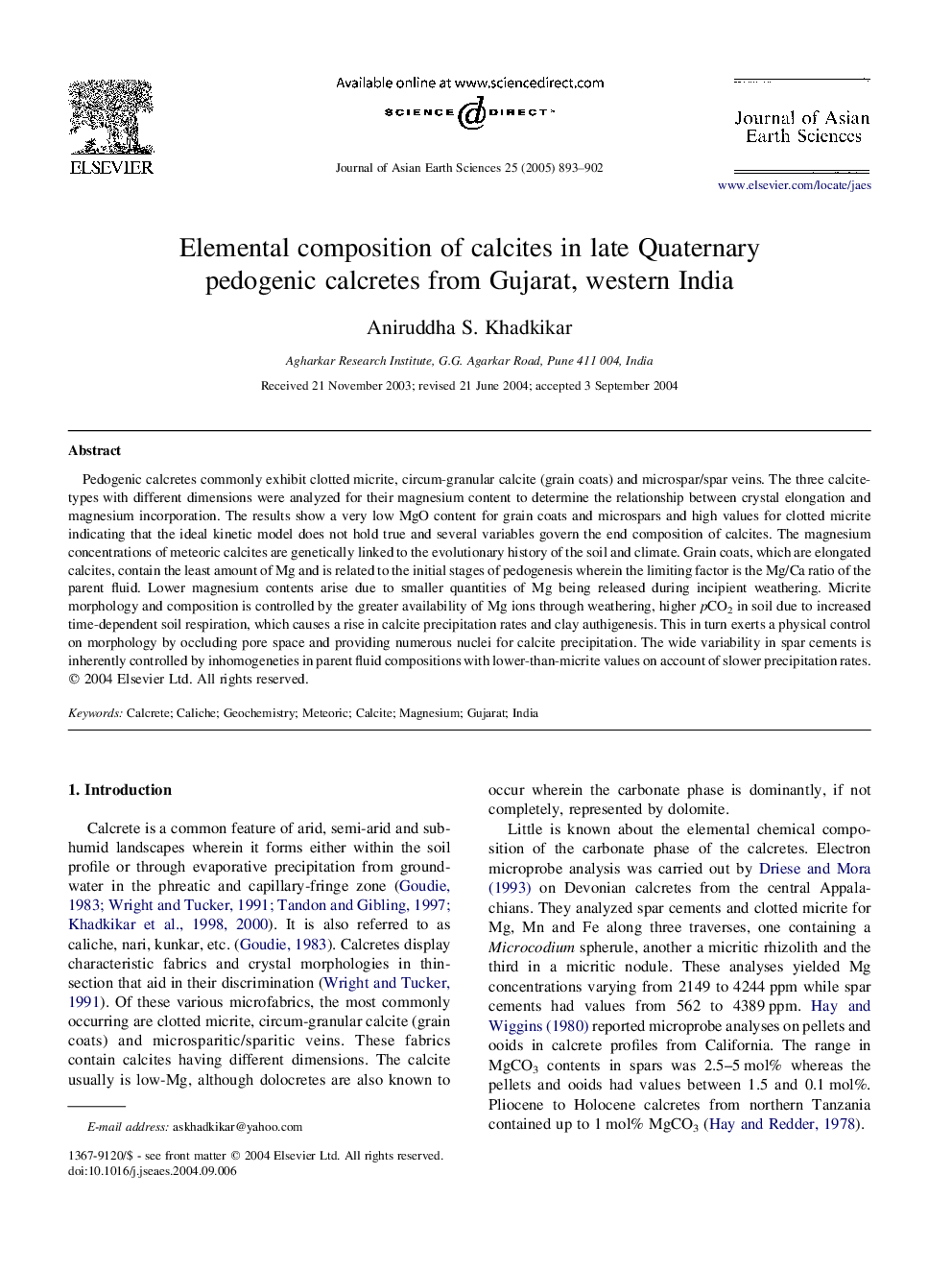| Article ID | Journal | Published Year | Pages | File Type |
|---|---|---|---|---|
| 9535670 | Journal of Asian Earth Sciences | 2005 | 10 Pages |
Abstract
Pedogenic calcretes commonly exhibit clotted micrite, circum-granular calcite (grain coats) and microspar/spar veins. The three calcite-types with different dimensions were analyzed for their magnesium content to determine the relationship between crystal elongation and magnesium incorporation. The results show a very low MgO content for grain coats and microspars and high values for clotted micrite indicating that the ideal kinetic model does not hold true and several variables govern the end composition of calcites. The magnesium concentrations of meteoric calcites are genetically linked to the evolutionary history of the soil and climate. Grain coats, which are elongated calcites, contain the least amount of Mg and is related to the initial stages of pedogenesis wherein the limiting factor is the Mg/Ca ratio of the parent fluid. Lower magnesium contents arise due to smaller quantities of Mg being released during incipient weathering. Micrite morphology and composition is controlled by the greater availability of Mg ions through weathering, higher pCO2 in soil due to increased time-dependent soil respiration, which causes a rise in calcite precipitation rates and clay authigenesis. This in turn exerts a physical control on morphology by occluding pore space and providing numerous nuclei for calcite precipitation. The wide variability in spar cements is inherently controlled by inhomogeneties in parent fluid compositions with lower-than-micrite values on account of slower precipitation rates.
Related Topics
Physical Sciences and Engineering
Earth and Planetary Sciences
Geology
Authors
Aniruddha S. Khadkikar,
